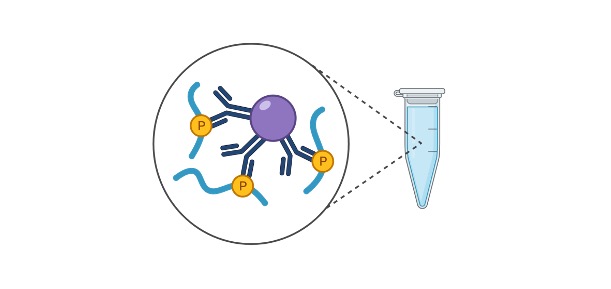Table of Contents
Vacuole Definition
A vacuole is a cellular organelle that stores different solutions or materials. This comprises both solutions that have been produced and are being stored or expelled, as well as those that have been phagocytized, or absorbed by the cell.
A vacuole is essentially a compartment enclosed by a membrane that prevents the cytosol from coming into contact with the substances within. Vacuoles are enclosed by semi-permeable membranes that allow only specific molecules to pass through.
Vacuole Structure
A vacuole is a term that encompasses a wide range of membrane-bound sacs. Phospholipids make up the membranes, although each creature may employ slightly different phospholipids.
Proteins are embedded in membranes and can either transport chemicals across the membrane or give it structure. Various protein combinations allow different vacuoles to handle and retain different materials.
Various genetics induce different proteins to embed in the vacuole membrane, allowing varied chemicals to pass through and giving the vacuoles different characteristics.
Vacuoles have developed to serve as water storage organelles in most plant cells, and they also serve a number of other roles.
Animals don’t rely on this water storage to maintain their stiffness; instead, they employ their vacuoles to store a variety of products as well as for exocytosis and endocytosis.
Vacuole Function
i. Water Storage
A big vacuole takes up the bulk of the cell space in plants. The tonoplast, a kind of cytoplasmic membrane that can stretch and fill itself with a fluid known as cell sap, surrounds this vacuole.
The vacuole also absorbs protons from the cytoplasm, resulting in an acidic environment within the cell. The chemical gradient generated by the vacuole may then be used to transfer molecules into and out of the vacuole, a process known as proton motive force. This involves water and other molecular movement.
ii. Turgor Pressure
Plants employ their vacuoles for a second purpose that is critical to their survival. The vacuole can become compressed and exert a strain on the cell walls when it is entirely filled with water.
Although the turgor pressure in each cell is tiny, it helps the cells to form a shape and withstand wind, rain, and even hail. Although woody plants produce more proteins and fibres to help them stand taller, many non-woody plants may grow to be many feet tall just by turgor pressure.
While this is an effective technique for plants to build themselves, if the pH balance is incorrect or there isn’t enough water, the plant may droop.
If your houseplants are drooping, make sure they’re getting enough water. In a couple of hours, they may go from wilting to turgid with a short sip. Check the pH of the soil if that doesn’t work.
The roots can’t take up water or nutrients to store in the vacuoles of the cells if the circumstances aren’t suitable, and the plant wilts. If you change the pH, the plant will tighten up immediately.
iii. Endocytosis and Exocytosis
When a significant amount of material is taken in by endocytosis or expelled via exocytosis, a vacuole is utilised. Many plant and animal cells take in chemicals that must be stored outside of the cytoplasm.
This might be due to the fact that the chemicals are reactive, causing undesirable responses. It’s also possible that the chemicals would interfere with biological functions due to their size.
Lysosomes are vesicles that take in and digest chemicals. These lysosomes can sometimes join together to form a big digestive vesicle that can digest nutrients in an acidic environment before transferring them to the cytosol or other organelles for utilisation.
Endocytosis is a process that occurs in many types of cells. Many cells, on the other hand, operate as secretory cells, which must generate and expel vast volumes of various chemicals.
The chemicals are made in the endoplasmic reticulum and then transported to the Golgi apparatus where they are changed and tagged before being distributed.
After that, the chemicals can be placed in vesicles. Before being expelled, the vesicles go into the cytoplasm and may combine into a bigger vacuole.
Exocytosis is the term for this process. The vacuoles that transport various chemicals to and from different cells, and even within cells when they have diverse roles, differ in form.
Many vacuoles may be found in an animal cell, each of which performs a different purpose. They’ll be deemed vacuoles once they’ve fused together.
iv. Other Storage Functions
Many different sorts of molecules can be stored in vacuoles. In specialised vacuoles, fat cells, for example, store massive quantities of lipids. Single cells may store a considerable quantity of fat in this way, which organisms can utilise when resources are few.
Because the vacuole may expand and contract, an organism can increase or lose weight without adding or subtracting too many cells. Other times, organisms’ vacuoles are employed to build whole ecosystems in which symbiotic species can thrive.
Endocytosis allows coral polyps to eat algae, yet the algae are permitted to live in vacuoles within the coral. This permits the coral to absorb the oxygen and nutrients that the algae provide.
Vacuole FAQ
A vesicle is a tiny membrane-bound vacuole that can merge to form a larger vacuole.
The digesting enzymes are contained in the lysosome, which is a particular vesical.
Exocytosis is the process of a cell excreting substances.
The process of bringing things into the cell is known as endocytosis.
Vacuole Citations
- The Participation of Regulatory Lipids in Vacuole Homotypic Fusion. Trends Biochem Sci . 2019 Jun;44(6):546-554.
- The Leishmania Parasitophorous Vacuole Membrane at the Parasite-Host Interface. Yale J Biol Med . 2019 Sep 20;92(3):511-521.
- The vacuole guard hypothesis: how intravacuolar pathogens fight to maintain the integrity of their beloved home. Curr Opin Microbiol . 2020 Apr;54:51-58.
- Vacuole Biogenesis in Plants: How Many Vacuoles, How Many Models? Trends Plant Sci . 2020 Jun;25(6):538-548.







